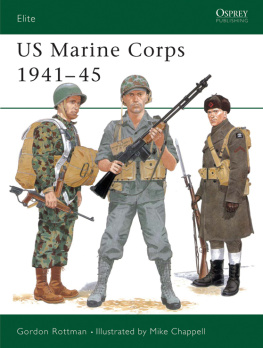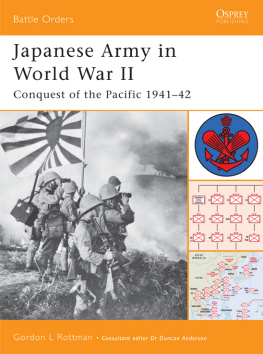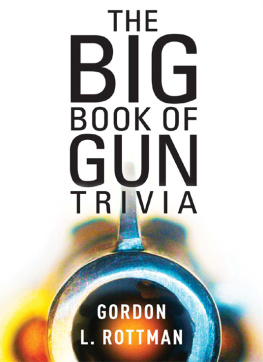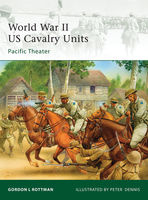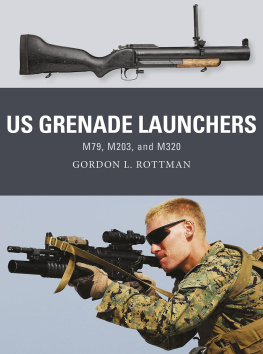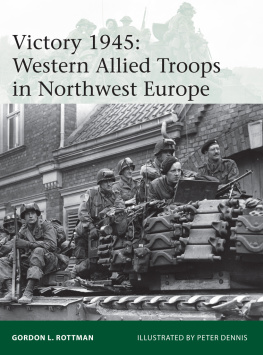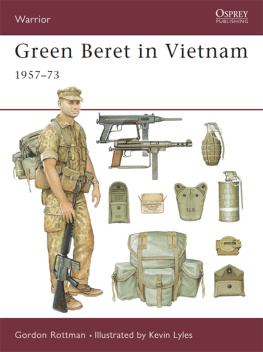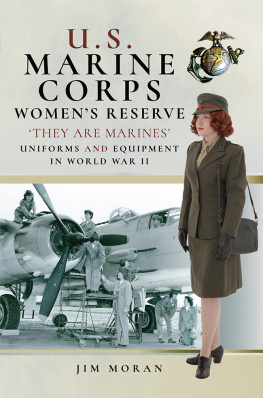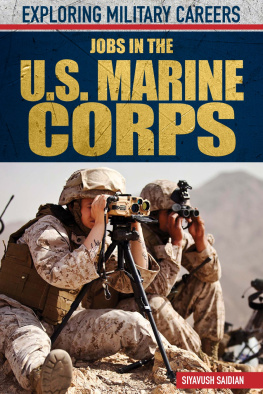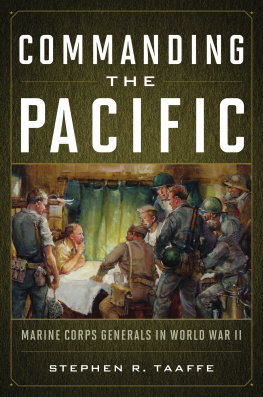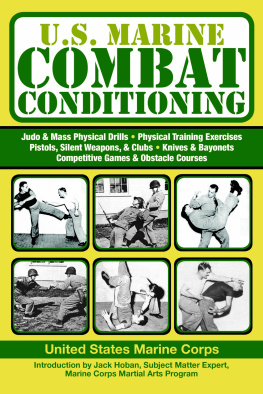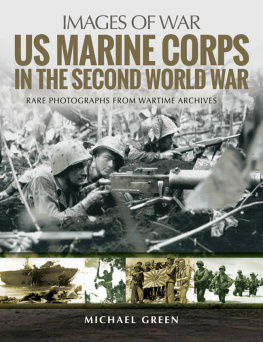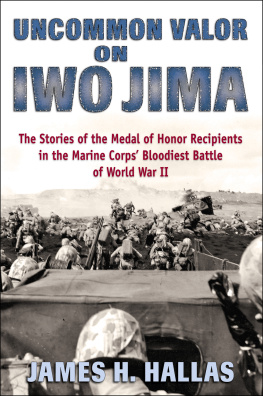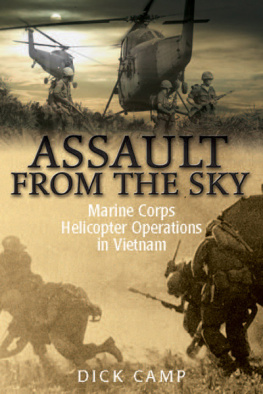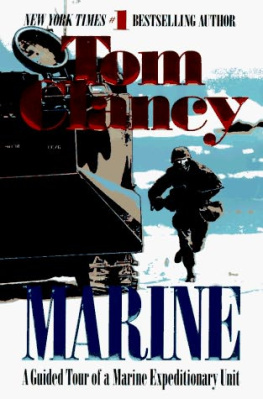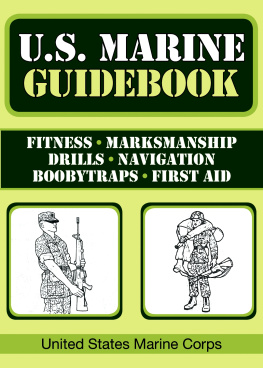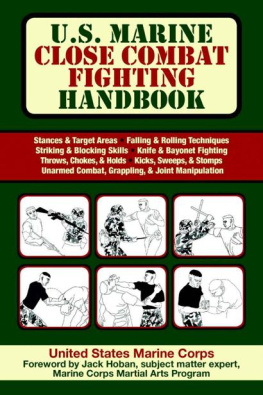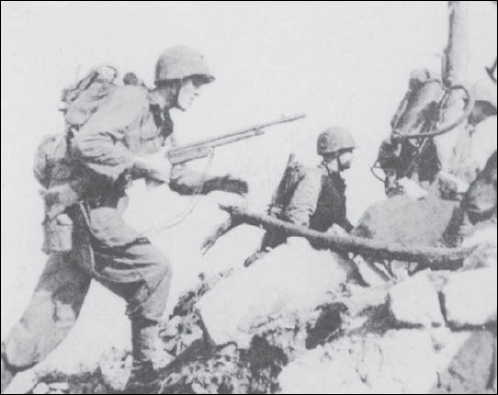Elite 59
US Marine Corps 194145
Gordon Rottman Illustrated by Mike Chappell
CONTENTS
US MARINE CORPS 194145
INTRODUCTION
While the US Marine Corps was one of the smallest of American armed services in World War II (only the Coast Guard was smaller), its contribution to the final victory cannot be overstated. The Marines comprised a mere 5 per cent of Americas 16.3 million men and women in uniform, but suffered 10 per cent of the nations combat casualties.
On average, among all US armed forces, 73 per cent served overseas, but in the Marine Corps 98 per cent of its officers and 89 per cent of its enlisted men had been deployed abroad by the end of the war. While the Army conducted many more, and sometimes larger, amphibious assaults, the Marines conducted proportionally more. In the Pacific, 18 Army divisions executed 26 landings, compared to 15 by six Marine divisions; these landings were often followed by some of the most brutal combat experienced by US forces. The price of victory was high: the Corps suffered 19,733 dead and missing and 67,207 wounded out of a total of 669,000 who wore the Marine uniform.
At the wars beginning the Corps possessed 65,881 officers and men: just over 31,000 belonged to the Fleet Marine Forces ground and air units; some 3,400 guarded overseas naval bases; almost 4,000 served aboard ships of the fleet; and 27,000 manned the shore establishment and guarded Stateside naval bases. By the wars end there were 485,833 men and women in the Marines, and to place this expansion in perspective, more Marines were wounded in action through 46 months of combat than the Corps had originally possessed on 7 December 1941. Interestingly, over 224,000 conscripts were inducted into the Corps, which prior to 1943 had been solely a volunteer force, and all but 70,000 draftees volunteered to become regulars or active reservists. Although the US Marine Corps is a component of the Navy, it operates autonomously. While its most notable achievements were those of the Fleet Marine Force ground and air combat units, the Marines maintained their earliest role, as that of ships detachments and naval base guards.
It must be remembered that the Marine Corps is a self-contained fighting force and possesses its own air component. There is not enough room here to cover Marine aviation, but it is nonetheless a major component of the Corps. At the outbreak of hostilities, Marine aviation possessed only 251 aircraft and 2,766 men (of whom just over 600 were pilots). By 1945 the fledgling air arm had grown to 32 aircraft groups and 145 squadrons, with 125,162 personnel; it accounted for 2,355 Japanese aircraft destroyed in air combat.
Regardless of facts and figures, one single message prevails: whether called a leatherneck, sea soldier or gyrene, it was the individual Marine and his rifle that made the Corps what it remains to this day, one of the worlds elite fighting forces.
The US Marine Corps globe and anchor, or chicken on a ball, device was standardised on 16 March 1936 as a cap and collar ornament. It was incorporated into a variety of insignia and borne on unit colours, Its basic design was In use since 1868 and was influenced by the Royal Marines badge. Officers wore a silver globe with gilt continents and gilt anchor with silver rope for blues while enlisted mens were brass. Bronze devices were worn on forest green and khaki uniforms by all ranks. The scroll (not included on uniform insignia) bore SEMPER FIDELISAlways Faithful, the Marine Corps motto. Beneath are the two types of fasteners in use during World War II, pin and screw.
MARINE ORGANISATION
It has long been said that the Marines deploy as brigades but fight as divisions. The five brigades formed just prior to, during, and immediately after the war were tied directly to specific divisions. They were raised for a specific purpose, usually a rapid deployment. Only one saw combat and in itself became a division. The division was the basic combat formation assigned the task of executing major amphibious assaults and securing island objectives.
The largest permanent Marine formations prior to early 1941 were the 1st and 2nd Marine Brigades, formed on the East and West Coasts in 193536. Each brigade was built around an infantry regiment and an aircraft group, but all units were nevertheless under strength. If deployed for combat, it was planned to supplement them with ships guards. Initially, the Fleet Marine Force (FMF) was oriented principally toward the Atlantic and Caribbean; the Pacific at that time was of secondary importance. From 194041 German submarines were the major threat, and the fear that Germany might occupy French possessions in the Caribbean and possibly attack the Azores. It was not until the summer of 1941 that the FMF began to focus its attention more on the Pacific. By that time the entire 15,000-man Marine Corps Reserve had been mobilised and the Marine Corps itself consisted of some 50,000 troops, though its units were still largely under strength.
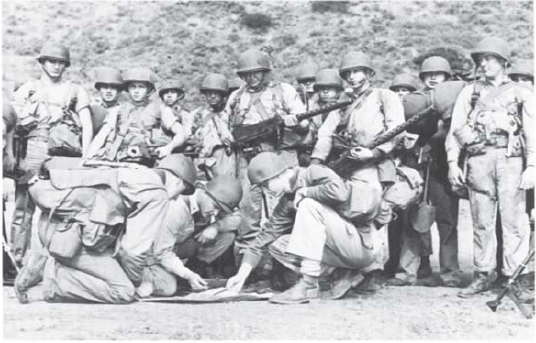
A 1st MarDiv weapons platoon, armed with M1919A4 machine guns, undertakes landing training on Chesapeake Bay in early 1942. At this time the Marines were still planning to participate in the invasion of North Africa alongside the Army. (Shelby Stanton collection)
Marine division organisation
The forming of Marine divisions was proposed in 1940. The new 1st and 2nd Marine Divisions (MarDiv) were formed in early 1941 by converting the two permanent brigades. They were slow in developing, and it was not until mid-1942 that they were considered ready for deployment. By then they had matured into a standard structure with sufficiently diverse units to make them self-contained amphibious fighting forces well suited for combat on rugged tropical islands.
Several changes were introduced each year of the war to capitalise on lessons learned from previous operations, to adapt to expected Japanese resistance, increase firepower, reduce manpower needs, provide for more effective allocation of resources between divisions and corps, and to further streamline divisional logistics. The few units deleted from the division were reassigned to the FMF. (Unlike the Armys divisions, which have endured many and varied reorganisations, todays Marine division bears a striking resemblance to its World War II predecessor. Even the assignment of regiments has changed little.) In 1941 each division consisted of a division headquarters; service, medical, engineer, light tank and parachute battalions; scout, anti-aircraft machine gun, signal, chemical, guard and motor transport companies; two infantry regiments; and an artillery regiment.
Ongoing fleet landing exercises identified numerous flaws in unit organisation, equipment, logistical support and tactics. As a result a pioneer battalion was added, to provide manpower for moving supplies from landing beaches to combat units. This new unit, along with the existing engineer battalion, and an attached naval construction battalion were placed in a new engineer regiment. A headquarters battalion was formed to consolidate divisional command and to control the various elements. The anti-aircraft company was absorbed into a new special weapons battalion, along with new antitank sub-units. A third infantry regiment was added, along with amphibian tractor, service, and medical battalions, while the chemical company was deleted. The concept of triangular reinforcement was strictly adhered to by the Marines. Divisional combat support and service units were organised for attachment to the three regiments and this concept was applied at all lower levels. The division headquarters battalion had headquarters, signal and military police companies. A reconnaissance company was added in 1944.

